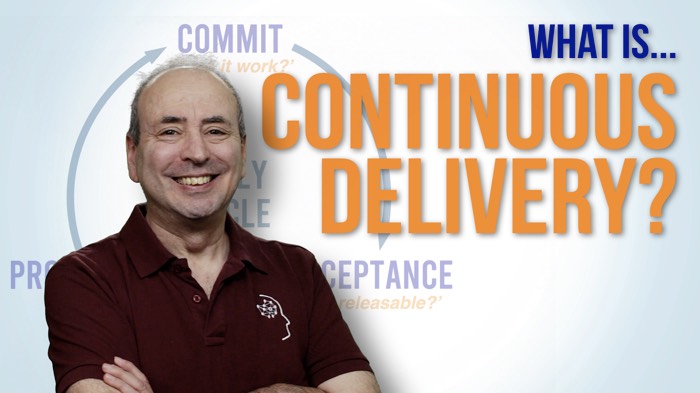What is continuous delivery, and how does it relate to project managers? In this video, we’re demystifying Continuous Delivery (CD), a key practice in software development and DevOps, streamlines processes. By focusing on automation and agile methodologies, continuous integration and continuous delivery (CI/CD) helps project management teams deploy code more efficiently.
This video is safe for viewing in the workplace.
This is learning, so, sit back and enjoy
Continuous Delivery
Continuous delivery is a software development practice where code is developed in short cycles and changes are automatically prepared for a release to production.
Continuous delivery follows a release process where each revision triggers an automated flow that builds, tests, and then stages the update. The developer then makes the final decision to deploy to a live production environment.
Principles of Continuous Delivery
A number of principles inform the practice of continuous delivery.
Learning and Discovery
Build software to learn from and then change it easily and safely with fast feedback cycles.
Managing Complexity
Break big problems into smaller, more manageable chunks, separating modules and reducing risk.
Short Cycles
Make progress through small incremental changes in short, iterative cycles, frequently integrating code changes and releasing software in small batches.
‘Bring the pain forward’
Tackle the tough tasks early to spot issues before they escalate
Fixed and automated deployment pipelines prevent errors.
The pipeline offers visibility of the process, early feedback to team members, and automation that reduces human error.
Continuous Feedback
Continuous Delivery emphasizes fast and reliable feedback loops that incorporate user feedback into the next iteration of development.
Version Control
Everything is under strict version control – ‘All change to production flows through version control.’
Collaboration
Teams work together to ensure software is always in a releasable state.
Continuous Delivery Phases
Commit Phase
Use automated testing to answer the question, ‘Does it work?’ – On a daily cycle.
Acceptance Phase
‘Does it work as intended?’ Validation of its performance and security.
Production Phase
Put the new capabilities into the hands of users.
The Benefits of Continuous Delivery
- Automates the process of building, testing, and preparing code changes for release to production – makes software delivery more efficient and rapid.
- More frequent testing finds bugs sooner – allowing fixes before they cause problems. Cheaper and easier to fix, leading to higher quality software
- Team is more productive – CD frees up developers from manual tasks and encourages behaviors that help reduce the number of errors and bugs deployed to customers.
- Teams are happier when they feel more productive and less frustrated.
- Increased business agility because CD delivers updates to customers faster and more frequently, allowing the business to respond more quickly to market forces.
Continuous Delivery vs. Continuous Deployment
With continuous delivery, every code change is built, tested, and then pushed to a non-production testing or staging environment. There is significant testing before deployment into production. Continuous delivery requires manual approval by the developer, before an update to the production system. With continuous deployment, changes are pushed to production automatically, without explicit approval.
Recommended Videos about other Agile or Software Development Frameworks
Carefully curated video recommendations for you:
- Scrum
- Disciplined Agile (DA)
- Scaled Agile Framework (SAFe)
- Rational Unified Process (RUP)
- Agile Release Train (ART)
- Extreme Programming (XP)
- Feature Driven Development (FDD)
What Kit does a Project Manager Need?
I asked Project Managers in a couple of forums what material things you need to have, to do your job as a Project Manager. They responded magnificently. I compiled their answers into a Kit list. I added my own.
Check out the Kit a Project Manager needs
Note that the links are affiliated.
Learn Still More
For more great Project Management videos, please subscribe to the OnlinePMCourses YouTube channel.
If you want basic Management Courses – free training hosted on YouTube, with 2 new management lessons a week, check out our sister channel, Management Courses.
For more of our Project Management videos in themed collections, join our Free Academy of Project Management.
For more of our videos in themed collections, join our Free Academy of Project Management.

